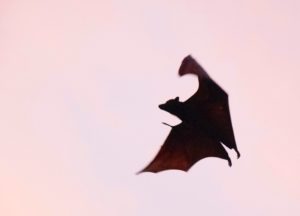With Halloween only days away, now is the time to learn about Halloween facts! And if you haven’t yet celebrated the spookiest time of year, now is the time to do so.
So, don’t wait! There’s still time to put together a D-I-Y costume. There’s time to carve pumpkins, have a scary movie marathon, and visit a haunted house.
There’s also still time to learn about the true meaning of this glorious holiday. What are some cool Halloween facts related to trick-or-treating, movies, and costumes? How is Halloween celebrated in other parts of the world? What are the origins of Halloween history, anyway?
Ready to learn everything there is to know about the best time of year? Here are 8 of the best and spookiest Halloween facts!
1. Halloween Has Origins Dating Back 2,000 Years
Did you know that Halloween is not just about dressing up and eating candy? In fact, Halloween day commemorates the start of Allhallowtide.
Allhallowtide a 3-day celebratory period in the Christian faith. Over the course of these 3 days, Christians honor the dead, as well as their saints.
Allhallowtide has been around since the formation of Christianity. Several Christian denominations celebrate it differently… but all centered around commemorating the souls of those who have passed.
2. Halloween Has Ties with Samhain
Have you ever wondered why the concept of ghosts is so prevalent during the month of October? Why are people so fixated on dressing up as ghosts? Why are humans so fascinated with the idea of haunted houses?
There are a lot of misconceptions about Halloween being a pagan, even a Satanist, holiday. In actuality, Halloween is a Christian holiday… and it’s also tied with another celebration known as Samhain.
Samhain is not so much a holiday as it is a seasonal celebration. Hundreds of years ago, Gaelic and Celtic tribes would celebrate the end of the harvest season. They called the time of year surrounding November 1st as Samhain. And it was a period when people would come together, gather their food, and prepare for winter.
Samhain is also believed to be a time when the spirits of those who have passed are able to cross into this world. Many Celtic and Gaelic tribes would provide food offerings to these spirits. They believed that by doing so, the spirits would bring good fortune to them for the winter ahead.
3. The Idea of Costumes Originated from Samhain
Halloween history is deeply rooted in Allhallowtide and Samhain. So, it’s no wonder why ghosts and Halloween go hand-in-hand. But why do we dress up in costumes every Halloween… and where did this idea come from?
It’s true that North Americans brought the concept of dressing up to prominence. In the 20th century, Americans and Canadians began to wear costumes around this time of year. By the mid-20th century, trick-or-treating was an all-out custom.
But despite all that, the Americans weren’t the first ones to wear costumes this time of year. The Celtic and Gaelic tribes which celebrated Samhain innovated costume wearing. And they did so in commemoration of the spirits who visited our world around the end of October.
In fact, the old belief was that if you could trick a spirit in disguise, they would leave you alone. This would prevent the tribesmen from having to offer food and treats.
4. Jack-o-Lanterns Were Not Always Made from Pumpkins
Ah, Jack-o-Lanterns. The quintessential Halloween decoration. It’s a custom that families look forward to every year. But where does the concept of the Jack-o-Lantern come from? And have we always used pumpkins to carve out spooky faces?
The term Jack-o-Lantern actually translates to “fool of the fire” in traditional English. The custom of carving out Jack-o-Lanterns began in Ireland around 300 years ago.
But Jack-o-Lanterns were not always carved out of pumpkins. The Irish used to carve them out of turnips and other root vegetables.
According to Irish folklore, Jack-o-Lanterns got their name from a man named… You guessed it… Jack! But this was no ordinary man. This Jack was a man who had tricked the Devil so many times that he was not allowed in Heaven nor Hell. Instead, Jack had no other choice but to wander Earth until the end of days. And he’d wave a lantern and trick those who ever crossed his path.
We may still carve pumpkins in honor of this old Irish custom. But carving out vegetables was not a concept that the Irish invented. Maori tribes would also carve out vegetables several hundred years ago. But we can still credit the Gaelic and Celtic tribes of centuries past for making the practice of carving what it is today.
5. People Used to Ask for Cakes Instead of “Treats”
Trick-or-treating may be an activity that little kids get to do every October 31st. But did you know that the activity has a deeper meaning in Halloween history?
During medieval times, impoverished Christians would go door-to-door around Halloween day. But instead of receiving candy, they’d receive round treats known as soul cakes. Many would offer prayers to the dead, especially to the relatives of those passing out the soul cakes.
6. The Color Scheme of Orange & Black Is Not Random
Have you ever wondered why black and orange are the predominant Halloween colors?
You’re not alone. People often wonder why we decorate our homes and clothing with orange and black this time of year. And there are a few reasons as to why we do.
Orange is, of course, a common color we see this time of year with pumpkins and the changing leaves. So, where does black come into play?
Taking previous Halloween facts into consideration, black is reminiscent of Samhain. Halloween day marks the transition from the lighter, warmer days to the darker months to come.
As we all know, there’s less light in the winter. So, black signifies what’s to come while the orange celebrates the colors of this time of year.
7. Mexicans Celebrate the Day of the Dead
The Day of the Dead celebration has grown increasingly popular in recent years. It’s true that the ghoulish aesthetic of this celebration makes for great costumes. But there’s actually a real reason to dress up as a Day of the Dead saint this time of year.
This time of year, Mexican Catholics celebrate the Day of the Dead on November 1st and 2nd. It’s known as Dias de Los Muertos. And on this day, Mexicans will dress up as skeletons… and even parade around with sugar skulls, candles, and adult-sized fake skeletons.
Every town celebrates Dias de Los Muertos a little bit differently. But in most places, it’s not uncommon for people to light candles and hold vigils. It’s also not uncommon for them to decorate their homes and eat a sugared bread known as “pan de muerto”.
8. Bats Are Not Entirely Tied to Vampires
It’s no secret that people’s fascination with vampires comes out this time of year. We tend to associate vampires with bats. After all, vampire folklore suggests that vampires can transform into bats.
And yes. People like to decorate their houses with bats this time of year. But they may not fully understand the correlation with bats and Halloween history.
Back in the days of Samhain, it was common for Celtic and Gaelic tribes to burn bonfires. These bonfires would then attract mosquitoes, moths, and other insects. This would in hand attract hungry bats who liked to feed on these creepy and crawly creatures.
Share Halloween Facts with Your Friends & Family This Year!
There you have it, folks. 8 of the spookiest and most interesting Halloween facts you may have not known about. With Halloween only days away, now is the time to celebrate… and what better way to do that than to share these facts with your friends and family!
Speaking of which… There’s still plenty of time to buy your tickets to Thrillvania Haunted House park. We’re open Halloween night… and tickets are selling fast!






